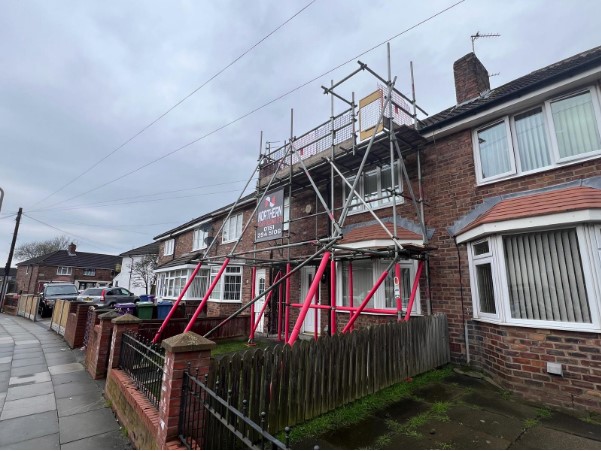How Long Does It Take to Scaffold a House?

Home renovations often bring up a lot of questions, and one that we frequently hear is, "How long does it take to scaffold a house?" At Northern Scaffolding, we understand that timelines matter when you're planning work on your property, especially if it involves access to your roof, exterior walls, or upper floors. The answer to this question isn't always straightforward, as several factors determine how quickly scaffolding can be set up around a house. From the size of your property to access points and special features like chimneys or conservatories, each home presents its own set of requirements.
In this post, we'll break down the elements that influence the time it takes to scaffold a house and share examples of what can impact timelines.
Key Factors That Affect Scaffolding Timeframes
1. Property Size and Complexity
The size and shape of your property are big factors in determining how long scaffolding will take to install. For instance, a small two-storey terraced house may only need a day or two for setup, as it typically requires a simple scaffolding structure. A larger, detached home with more surface area or multiple levels, however, could take longer. If we need to set up scaffolding around the entire perimeter or if the property has different elevations, it can add some time as well.
Homes with extensions, conservatories, or unique architectural features often require a bit more planning, as we adapt the scaffolding to fit the layout. We pride ourselves on being thorough, as a well-fitted scaffold is key to keeping the project on track and the work site accessible.
2. Location and Access Challenges
A property's location can also influence the setup time. If your home is on a narrow street, in a cul-de-sac, or has limited access, this can mean more time transporting and assembling the equipment safely. If we need to install scaffolding that extends over a pavement or public space, we'll often need council permissions before we start, which can add a few days to the timeline.
Homes close to neighbouring properties can mean we need to take extra care positioning the scaffolding to avoid obstructing access or affecting nearby structures. In these cases, tight spaces often require a slower, more detailed setup. On the other hand, properties in open, easy-access locations generally allow for a more efficient scaffolding setup.
3. Weather Conditions
Although we're used to working through most types of weather, certain conditions can affect the pace of a project. Heavy rain, high winds, or freezing temperatures can slow down the project. For example, strong winds can make lifting and securing scaffolding components more challenging, especially at higher levels. Rain usually doesn't halt our work, but persistent downpours might slow down the process slightly as we take extra measures to ensure the scaffold is secure.
While the weather can impact the pace, our team is experienced in adjusting plans to work as efficiently as possible, all while ensuring the structure is both stable and reliable.
Scaffolding Over Conservatories
Scaffolding around conservatories requires additional expertise and a specific approach. Conservatories are often made with glass and lightweight materials, which aren't designed to bear weight. To work around this it usually involves setting up support beams on either side of the conservatory to create a stable platform above. This setup may add extra time to the project, depending on the conservatory's size and height, and the complexity of the support required.
Scaffolding a Chimney
Chimneys can also present unique challenges, as they're often the highest point on a house and may need specialised scaffolding for stable access. Because of the height and unique position of the chimney, setting up scaffolding here can require a bit more time than other areas of the house. For a standard semi-detached property, chimney scaffolding might add another day to the project, with the full setup taking around three to four days overall, depending on factors like weather and accessibility.
Putting It All Together
In summary, the time it takes to scaffold a house depends largely on the property's size, layout, and access, as well as any unique features like conservatories or chimneys that may require a specialised approach. A straightforward scaffolding job on an average home might take just a day or two, while more complex properties with additional features could require three to five days.
If you're planning renovations, understanding these timelines can help you better prepare and anticipate the duration of scaffolding on your property. To discuss your requirements for scaffolding in Liverpool, contact us at 07879 918 691 or 0151 294 5106 today.
